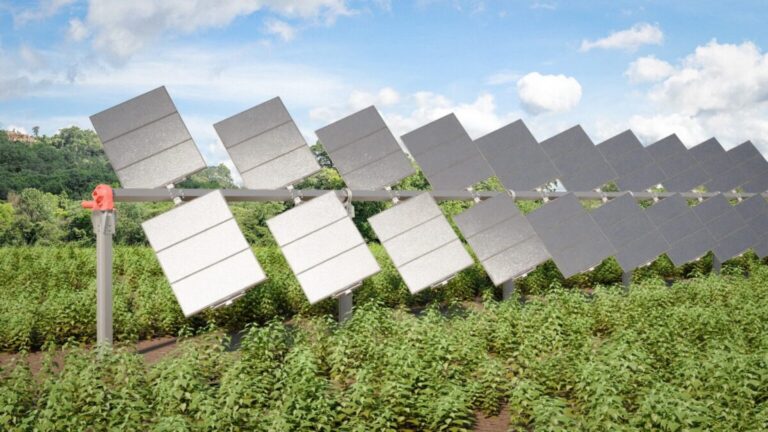It will be integrated with Fraunhofer ISE’s micro-CPV module technology, with an efficiency of 36.5%. A first prototype will be installed in Spain before the end of 2024.
Soltec, a manufacturer of solar trackers for large-scale projects, has collaborated with the Fraunhofer Institute for Solar Energy Systems (Fraunhofer ISE) to develop a prototype of a two-axis tracker for concentrated PV applications.
The project, led by the German institute, aims to adapt Soltec’s solar tracker technology to the requirements of a new generation of micro-CPV modules operating on almost a thousand concentrated suns. “Micro-CPV modules have demanding accuracy requirements for bi-directional tracking to always point the CPV modules precisely towards the sun,” Soltec said.
The institute’s latest micro-CPV technology achieves a conversion efficiency of 36.5% and promises to increase electricity generation by 30% compared to today’s most efficient solutions.
“The solar tracker is a requirement for energy generation in concentrated PV modules and the new development aims to combine structural robustness, scalability, cost competitiveness and the ability to coordinate precise movements with a wide rotation range,” the Spanish manufacturer said.
The first prototype will be used all day to test tracking accuracy. At a later stage, the system can be equipped with 15.7 kWp micro CPV panels.
“Resource efficiency is becoming an increasingly important topic in solar photovoltaics and our technology instantly reduces module area by 30% and semiconductors by 1,300 times. We believe that this technology should find its market share for photovoltaic power plants in sunny countries of the world,” said Frank Dimroth, head of photovoltaic energy and concentrator technology at Fraunhofer ISE.
The new photovoltaic concentration system “breaks paradigms in the traditional design of 2-axis solar trackers,” Soltec said in a statement. In addition, it will be compatible with hydrogen generation from solar energy and agrovoltaic energy thanks to its ability “to adapt to different orientations and topographical conditions.” In addition, CPV modules emit diffuse solar radiation and ensure that plants receive sufficient sunlight for their growth, while protecting them from excessive high-intensity radiation.
This content is copyrighted and may not be reused. If you would like to collaborate with us and reuse some of our content, please contact: editors@pv-magazine.com.


